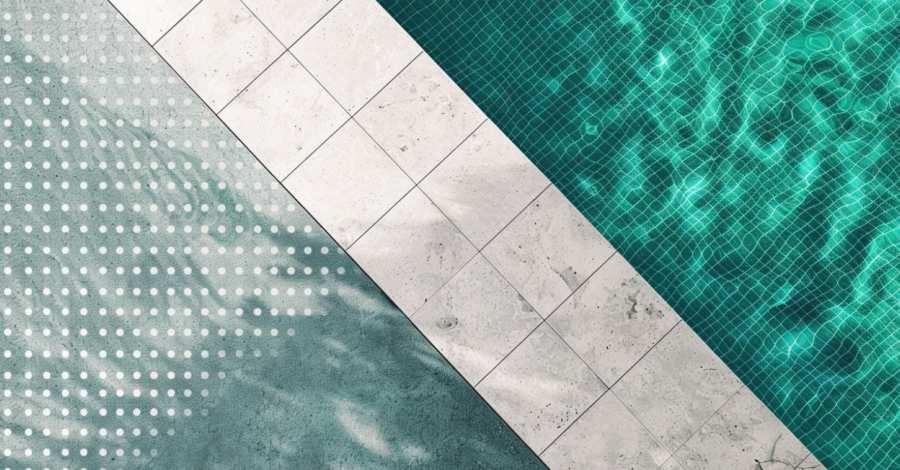Surface Finishes and Their Sneaky Ways
Stone isn’t born equal, and the finish makes the difference between “confident stride” and “cartoon banana peel.” Polished stone, for instance, looks like it should belong in an Italian piazza—but unless you have a team of daily sweepers and the climate of Sicily, it becomes treacherous when damp. Flamed, textured, or riven finishes, on the other hand, bite into shoe soles with reassuring authority. Porcelain paving often comes with a built-in anti-slip rating—pay attention to those little numbers (R11 and above are generally safe bets). It’s not just a manufacturer’s gimmick; those tests involve oil, ramps, and more controlled slipping than you’d ever want to do yourself.Joint Rotation and the Curious Tilt
Imagine a row of paving slabs set perfectly flat. Now picture rain deciding to pool on one particular slab, refusing to budge, creating a tiny lake that’s both unsightly and perilous. Slight rotations in the joints—barely perceptible to the eye—help guide water away, preventing puddles from forming. It’s the difference between dry stoneware and your uncle testing his balance skills with a tray of beers. An installer who cares will build in this subtle tilt, so it’s worth asking questions before you hire. No one likes to be fobbed off with “gravity will sort it out.”Drainage Inclines and Why Flat Isn’t Always Fabulous
Perfectly level patios are a modern fetish. Flat looks smart, flat seems easy, flat photographs beautifully. But flat also collects water like a basin. A gentle incline—usually about 1:60—encourages rain to escape politely toward a drain or soakaway, instead of gathering on your prized flagstones. This angle is so mild you’ll never notice it while strolling across the patio, but your shoes will thank you. And when winter rolls around, that incline is what keeps a light frost from becoming a full-blown skating rink. Engineers mutter about gradients for good reason; treat their mutterings with respect.Moss, Ice, and Other Seasonal Mischief
Nature enjoys finding cracks in your planning. Moss loves damp shade, algae adores a north-facing wall, and ice—well, ice is impartial, coating everything without fear or favour. Left alone, these opportunists make surfaces more treacherous than a politician’s promise. The trick is vigilance: sweep leaves before they mulch, scrub surfaces occasionally, and don’t let shaded corners turn into green slip zones. For ice, consider grit, salt, or specialised de-icing products—but remember, salt can damage certain stones over time, so choose carefully. A paved area should be a pleasure, not a seasonal booby trap.What to Inspect When Buying
Shiny catalogues have a way of making every stone look impeccable, but reality often sneaks in the small print. Check slip-resistance ratings if you’re buying porcelain; for natural stone, ask about the finish and request a sample you can actually step on. Test it with water—pour a glass, walk across, see how it feels. If a supplier squirms when you ask about test data or refuses to let you try before you buy, treat it as a warning sign. Your knees will thank you later.Safety Tips Without the Lecture
Sometimes, prevention is less about engineering and more about common sense. A few habits and tweaks can transform how safe your outdoor space feels:- Choose darker, textured slabs for shaded or damp-prone areas—lighter, glossy stones become treacherous when wet.
- Keep a stiff-bristled broom handy; a regular sweep prevents moss from setting up a permanent residence.
- Don’t underestimate outdoor mats by doors; they catch the worst of the dirt and water before it’s trailed indoors.
- In icy weather, avoid water pooling by clearing snow promptly—frozen footprints can become bizarrely permanent until the thaw.
- If all else fails, install discreet handrails near steps; no one ever regretted having something solid to grab when they lost their footing.
Slippery When Lit
Outdoor lighting can also play a subtle role in preventing slips. A well-placed bollard or step light turns what would otherwise be an ambush by the dark into a clear path. Shadows hide puddles and slick moss patches; illumination reveals them. Just make sure your lights don’t blind guests like an interrogation scene. The aim is gentle guidance, not spectacle.Falling Flat Isn’t Inevitable
Paving should be enjoyed without the background dread of a pratfall. By thinking about finishes, drainage, joint rotations, and the seasonal antics of moss and ice, you’re not just saving yourself embarrassment—you’re future-proofing your space. A safe patio isn’t an indulgence; it’s a quiet luxury, like a kettle that doesn’t leak or shoes that don’t squeak. Outdoor surfaces will never be perfect—rain, frost, and biology won’t allow it—but with a few strategies in place, they can be resilient. And with that, you can stride across your garden with the assurance of someone who knows the ground beneath them isn’t waiting to betray their dignity.Article kindly provided by stonefooting.co.uk


